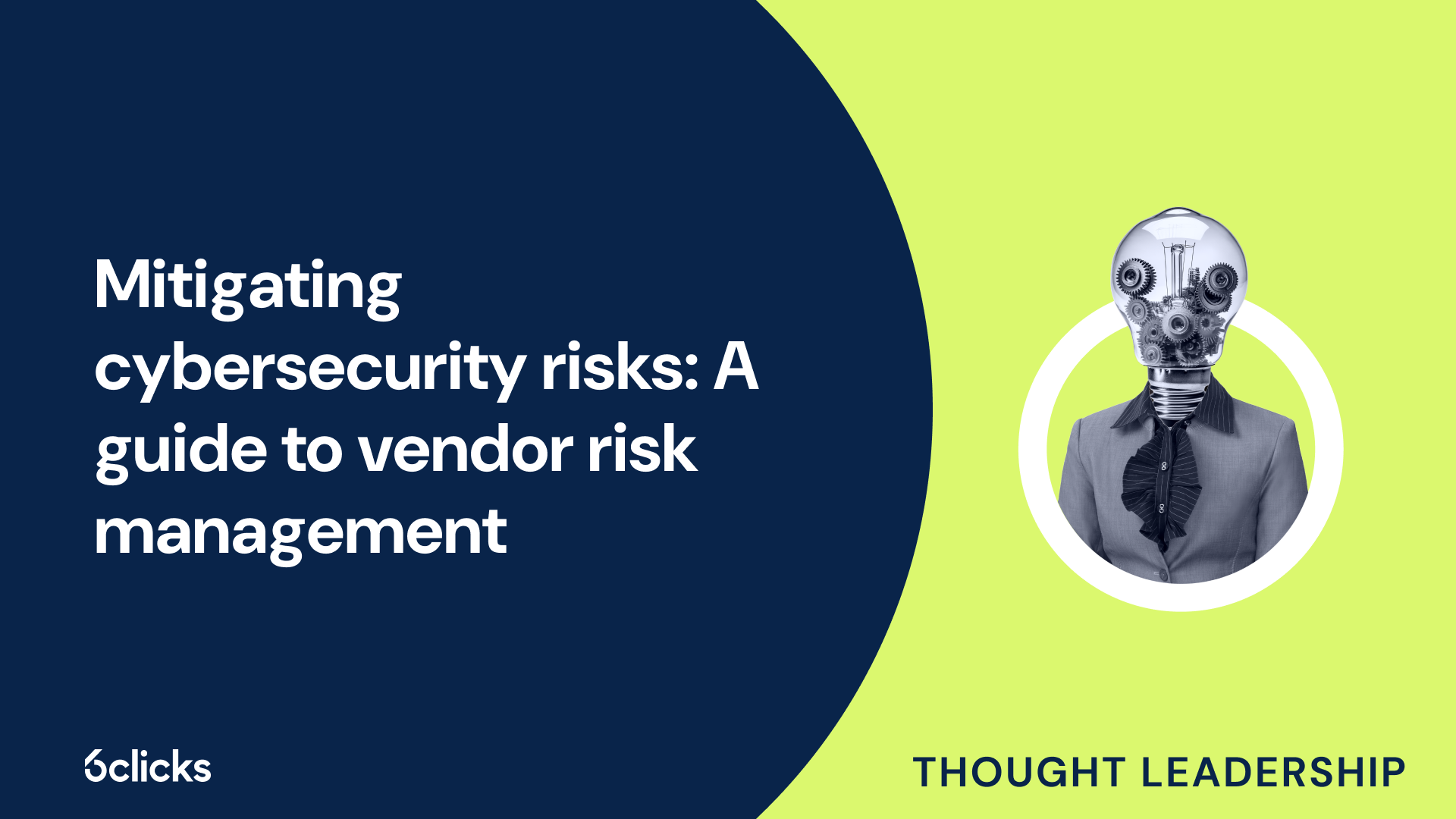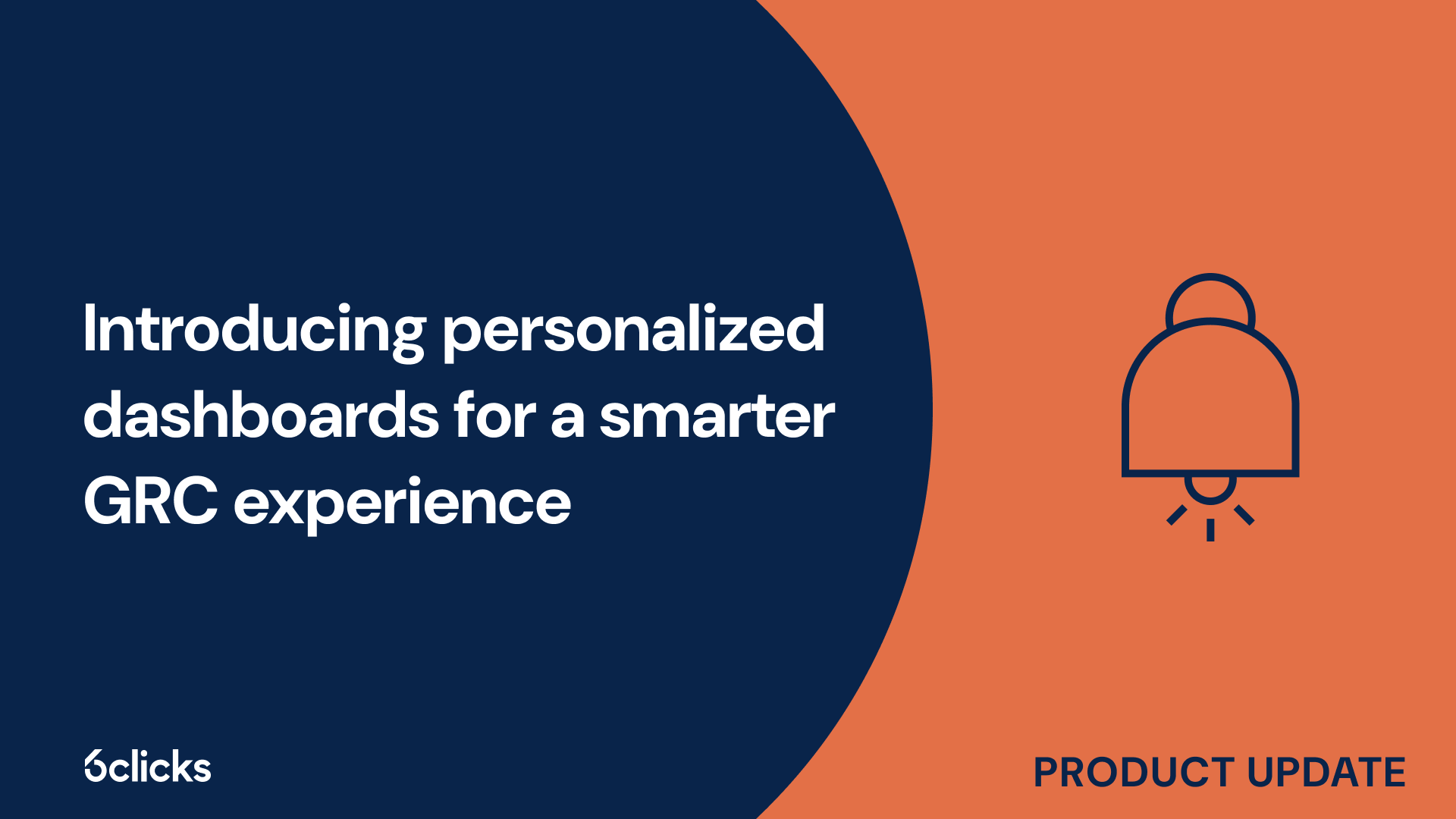The expert's Asnwer to Why is ISO 27001 required?
-1.png?width=314&height=391&name=Group%20193%20(1)-1.png)
Why is ISO 27001 required?
What is ISO 27001?
ISO 27001 is an international standard that provides a systematic approach for establishing, implementing, maintaining, and continually improving an organization's information security management system (ISMS). It sets out the criteria for managing security risks, implementing security controls, and addressing security requirements. The standard outlines a framework for organizations to identify and assess security risks, define security objectives, and establish security policies and processes. ISO 27001 is designed to ensure that organizations have a comprehensive and effective approach to managing information security, protecting confidential data, and addressing potential threats and security incidents. It is applicable to organizations of all sizes and sectors, and its certification demonstrates a commitment to information security and the implementation of best practices.
The purpose of ISO 27001
The purpose of ISO 27001 is to enhance and fortify an organization's Information Security Management System (ISMS) by providing a comprehensive framework for controlling and safeguarding valuable data. It sets out the requirements for establishing, implementing, maintaining, and continually improving an ISMS within the context of the organization's overall business risks.
ISO 27001 certification is crucial as it demonstrates an organization's commitment to ensuring the protection and privacy of customer and partner data. This certification acts as proof that the organization has implemented robust security measures to prevent unauthorized access, disclosure, alteration, or destruction of information assets. By obtaining ISO 27001 certification, businesses can instill confidence in their stakeholders and showcase their dedication to complying with legal and regulatory requirements related to data security.
Moreover, ISO 27001 helps organizations identify and address potential risks and vulnerabilities through risk assessments and management reviews. It encourages the implementation of security controls, policies, and processes to mitigate security threats and incidents. By adopting a systematic and continual improvement approach, businesses can effectively manage and reduce security risks, protect intellectual property, ensure business continuity, and meet contractual and legal requirements.
Benefits of ISO 27001
ISO 27001 offers numerous benefits to organizations that prioritize information security. Firstly, it provides a structured and internationally recognized framework for implementing and managing security controls and processes. This allows businesses to establish a comprehensive and systematic approach to managing security risks and protecting sensitive information. ISO 27001 also helps organizations enhance their security posture and effectively respond to potential threats and security incidents. By implementing ISO 27001, businesses can demonstrate their commitment to data security to customers, partners, and stakeholders, strengthening their trust and credibility. Additionally, ISO 27001 certification can open up new business opportunities, as it may be a requirement for working with certain clients or industries. Ultimately, ISO 27001 enables organizations to establish a robust security management system, protect their valuable assets, maintain compliance with legal and regulatory requirements, and continually improve their information security practices.
Enhancing security objectives
ISO 27001 is a widely recognized international standard that enhances security objectives by providing organizations with a systematic approach to managing information security risks. By implementing ISO 27001, organizations are able to identify, analyze, and treat information risks effectively.
The standard requires organizations to establish, implement, maintain, and continually improve an Information Security Management System (ISMS). This framework helps organizations define their security objectives and implement the necessary controls and processes to achieve them. By doing so, organizations can protect their sensitive information assets from potential threats and security breaches.
One of the key requirements of ISO 27001 is senior management leadership. Senior management plays a crucial role in driving the implementation and success of the ISMS. They provide the necessary resources and support to ensure that the security objectives are aligned with the organization's overall goals and objectives.
Another important aspect of ISO 27001 is the need for a policy mandate. Organizations are required to have an information security policy that is communicated to all employees and stakeholders. This policy sets the direction and expectations for information security within the organization.
Assigning information security roles and responsibilities is also emphasized in ISO 27001. This ensures that individuals within the organization have clear accountabilities for managing information security and that everyone understands their role in protecting sensitive information.
Furthermore, ISO 27001 emphasizes the importance of monitoring, measuring, and analyzing information security management controls and processes. This allows organizations to identify any gaps or weaknesses in their security posture and take appropriate corrective actions.
Improved security practices
ISO 27001 plays a crucial role in improving security practices within organizations by implementing industry best practices to mitigate security breaches and strengthen information security processes. By adhering to the standard, organizations can establish a systematic approach to identify, assess, and manage security risks effectively.
One of the key factors in enhancing security practices is the involvement of highly qualified information security experts. These experts possess the knowledge and experience needed to observe and reinforce security practices across the organization. Their expertise ensures that security controls and measures are aligned with industry standards and regulatory requirements, minimizing potential vulnerabilities.
Another significant benefit of ISO 27001 is the opportunity for automation. Automating compliance processes allows organizations to streamline their efforts in meeting ISO 27001 requirements. This not only saves time but also ensures consistency and accuracy in implementing security controls and practices throughout the organization.
Through ISO 27001, organizations can establish comprehensive security objectives, assign clear roles and responsibilities, and continually monitor and improve their security management systems. This leads to improved security practices that protect critical information assets, mitigate security threats, and enhance the overall security posture of the organization. Such measures are essential in today's digital landscape, where cyber threats continue to evolve and pose significant risks to businesses.
Increased business continuity and resilience
ISO 27001 plays a crucial role in enhancing business continuity and resilience by establishing documented procedures that enable organizations to continue operating after an information security incident. These procedures outline the responsibilities, actions, timescales, and required work to ensure a swift and effective response to incidents, minimizing the impact on operations.
By implementing ISO 27001, organizations can define their acceptable level of continuity and develop business continuity procedures accordingly. These procedures encompass steps such as identifying key personnel, roles, and responsibilities during an incident, as well as outlining the process for activating incident response teams and communication protocols.
Furthermore, ISO 27001 helps establish a management structure that oversees the management of incidents and their escalation, both internally and externally. This structure ensures that incidents are addressed promptly and effectively, taking into account the severity and impact of the event. Where necessary, ISO 27001 provides criteria for escalating incidents to regulators or independent bodies, ensuring legal and regulatory compliance.
The expected time to return to business as usual (RTO) is also defined within ISO 27001. This ensures that organizations have a clear understanding of the recovery timeframe, enabling them to adapt their strategies and allocate resources accordingly. By defining and adhering to this RTO, organizations can minimize disruption and maintain business continuity, ultimately instilling confidence in customers, stakeholders, and regulators.
Protection of intellectual property rights
Protection of Intellectual Property Rights is of utmost importance in the context of ISO 27001 compliance. Intellectual property refers to intangible assets such as inventions, designs, trademarks, and copyrights that provide organizations with a competitive advantage and contribute to their success.
ISO 27001 helps organizations safeguard their intellectual property by establishing robust security measures and controls. Through risk assessments and management reviews, organizations can identify potential threats to their intellectual property and implement appropriate security controls to mitigate these risks. These controls may include access controls, encryption, backup procedures, and employee awareness training.
Failing to adequately protect intellectual property can have severe consequences for organizations. Unauthorized access, use, or disclosure of intellectual property can result in financial loss, reputational damage, and loss of competitive advantage. Organizations may also face legal consequences, including lawsuits for intellectual property infringement.
By complying with ISO 27001, organizations can demonstrate their commitment to protecting their intellectual property rights. This not only safeguards their valuable assets but also enhances their reputation as a trustworthy and reliable partner. Ultimately, ISO 27001 helps organizations create a secure environment that fosters innovation, stimulates growth, and ensures the long-term success of their intellectual property assets.
Contractual requirements and assurance for clients
ISO 27001 is not only crucial for protecting intellectual property but also plays a vital role in fulfilling contractual requirements and providing assurance to clients.
Many organizations have contractual obligations to ensure the security and confidentiality of client information. ISO 27001 helps organizations meet these requirements by establishing a systematic approach to managing security risks and implementing necessary security controls. By obtaining ISO 27001 certification, organizations can provide tangible proof to clients that they have implemented effective security measures and controls to protect their sensitive data.
Moreover, ISO 27001 helps organizations comply with legal and regulatory obligations related to data security. It ensures that organizations select and implement adequate security controls based on relevant laws and regulations. By following the ISO 27001 framework, organizations can demonstrate their commitment to maintaining the confidentiality, integrity, and availability of client information.
ISO 27001 certification also provides a significant advantage when it comes to satisfying other regulatory requirements. For example, certification aligns with the requirements of the Sarbanes-Oxley Act (SOX), the NIST Cybersecurity Framework, and the General Data Protection Regulation (GDPR). This alignment further enhances an organization's credibility and provides clients with the assurance that their data is being handled with the utmost care.
Certification process for adopting ISO 27001
The adoption and certification process for ISO 27001 involves several key steps. Firstly, organizations need to conduct a thorough risk assessment to identify potential security threats and vulnerabilities. This assessment helps in determining the necessary security controls and measures to mitigate these risks. Once the controls are implemented, an independent auditor is engaged to assess the effectiveness of the implemented controls and evaluate the organization's compliance with ISO 27001 requirements. This certification audit confirms that the organization has successfully implemented an Information Security Management System (ISMS) that aligns with the ISO 27001 standard. The auditor assesses various aspects, including the organization's security policies, processes, practices, and risk management framework. After a successful audit, the organization receives ISO 27001 certification, demonstrating its commitment to maintaining the security and confidentiality of client information. The certification process not only ensures adherence to international security standards but also strengthens the organization's overall security posture, enabling it to better protect against security breaches and potential threats. It also provides a competitive advantage by demonstrating a commitment to security, enhancing credibility, and instilling trust among clients and stakeholders.
Preparation stage and risk assessment
The preparation stage and risk assessment process are crucial steps in adopting ISO 27001, the international standard for information security management systems. This stage involves several key activities to ensure a smooth and effective implementation.
During the preparation stage, organizations need to familiarize themselves with the requirements of ISO 27001 and establish a clear understanding of their current security practices, vulnerabilities, and potential threats. This involves conducting a comprehensive risk assessment to identify and evaluate security risks, including potential impacts on confidentiality, integrity, and availability of information.
Conducting a formal risk assessment is important because it enables organizations to prioritize and address security risks in a systematic manner. It provides a structured approach to record data, results, and analysis, ensuring transparency and traceability in the risk-management process.
By establishing a risk-management framework based on ISO 27001, organizations can effectively mitigate security risks and protect their valuable assets, including intellectual property and customer data. This framework helps organizations define security objectives, implement appropriate security controls, and monitor and review security practices on an ongoing basis.
Certification audit by a third-party body
Achieving ISO 27001 certification involves a certification audit conducted by a third-party body. This process ensures that organizations are compliant with the ISO 27001 standard and have implemented effective security measures and controls.
The certification audit typically consists of two stages. The first stage, known as the Stage One audit, focuses on assessing the organization's documentation and determining its compliance with ISO 27001 requirements. During this stage, the auditors review the organization's policies, procedures, and security practices to identify any areas that need improvement.
Once the Stage One audit is successfully completed and any necessary improvements are made, the organization proceeds to the Stage Two audit, also known as the registration audit. This stage involves a more in-depth assessment of the organization's security management system. The auditors evaluate the implementation of security controls, the effectiveness of security processes, and the organization's overall adherence to the ISO 27001 standard.
The duration for achieving ISO 27001 certification can vary depending on the size and complexity of the organization's management system. On average, it may take between 6 to 12 months to complete the certification process.
By undergoing the certification audit process conducted by a third-party body, organizations can demonstrate their commitment to information security and enhance their reputation in the industry. The certification provides assurance to stakeholders that the organization has implemented robust security measures and is actively managing risks to protect sensitive information.
Implementing an information security management system (ISMS)
Implementing an Information Security Management System (ISMS) is a systematic approach that organizations take to manage and protect their information assets. This process involves several important steps to ensure that the organization's information is secure and that appropriate controls are in place to mitigate security risks.
Firstly, it is crucial to establish the scope of the ISMS. This involves identifying the type of operations and activities within the organization that will be covered by the ISMS. By setting clear boundaries, the organization can focus its efforts on protecting the specific areas that are most vulnerable to security threats. This helps to streamline the implementation process and ensures that resources are allocated effectively.
Once the scope is established, the next step is to develop an Information Security Policy. This policy sets out the organization's commitment to information security and provides a framework for managing security risks. The policy should comply with relevant legal regulations and ethical obligations, ensuring that the organization is meeting its legal responsibilities.
The Information Security Policy also plays a crucial role in demonstrating the organization's commitment to continual improvement. It outlines the organization's security objectives and provides a roadmap for implementing security controls, measures, and processes. By regularly reviewing and updating the policy, the organization can adapt to evolving security threats and ensure the secure handling of information.
Internal audits and management reviews
Internal audits and management reviews play a crucial role in the context of ISO 27001, ensuring the effectiveness of an organization's Information Security Management System (ISMS) and compliance with ISO 27001 requirements.
Internal audits are systematic and independent assessments conducted within the organization to determine whether the ISMS is functioning effectively. These audits identify any gaps or weaknesses in the security controls, processes, and practices, allowing the organization to address them promptly. By regularly conducting internal audits, the organization can ensure that its ISMS remains robust and aligned with the evolving security threats.
Management reviews, on the other hand, involve the evaluation of the entire ISMS by senior management. This process allows management to assess the ISMS's performance against the organization's security objectives and strategic direction. By examining the results of internal audits, reviewing security incidents, and considering the effectiveness of security measures, management can make informed decisions to improve the ISMS and address any deficiencies.
Both internal audits and management reviews contribute to continuous improvement by identifying areas that require enhancement or modification in the ISMS. They help the organization monitor its progress in achieving security goals, comply with ISO 27001 requirements, and demonstrate its commitment to information security to stakeholders.
It is important for these processes to be conducted by competent internal resources or independent third parties to ensure objectivity and impartiality. The findings and recommendations from internal audits and management reviews should be addressed promptly, and any identified issues should be resolved before proceeding with the external certification audit. This ensures that the organization is well-prepared for certification and provides evidence of a robust and effective ISMS.
International standards alignment with other organisations
ISO 27001, as an international standard for information security management, aligns with various other organizations and their standards to ensure global consistency and interoperability in information security management. This alignment is crucial in today's interconnected and globalized world where organizations operate across borders and share sensitive information.
ISO 27001 has a harmonized approach with several key organizations, including the National Institute of Standards and Technology (NIST), Control Objectives for Information and Related Technologies (COBIT), and Payment Card Industry Data Security Standard (PCI DSS). These organizations recognize the importance of information security and have developed their own frameworks and standards to address specific areas of concern.
The alignment with these organizations allows organizations implementing ISO 27001 to effectively integrate and comply with multiple standards and regulations. It provides a consistent approach to managing information security risks, implementing security controls, and maintaining security processes. This not only simplifies the compliance process but also ensures that organizations meet the requirements of different stakeholders, such as regulatory authorities, customers, and business partners.
Moreover, the alignment with these organizations enables organizations to benefit from the collective knowledge and best practices established by these internationally recognized bodies. It allows for the exchange of information and collaboration, fostering a global community of information security professionals focused on mitigating security risks and protecting sensitive information.
Ongoing maintenance to ensure compliance with the standard
Ongoing maintenance is crucial in ensuring continued compliance with the ISO 27001 standard. While achieving initial certification is a significant milestone, it is equally important to maintain compliance over time to effectively manage information security risks and protect sensitive data.
One key activity in maintaining compliance is conducting regular risk assessments. These assessments help identify and evaluate potential threats and vulnerabilities, enabling organizations to implement appropriate security controls. By regularly reviewing and updating risk assessments, organizations can stay vigilant against emerging security risks and ensure the effectiveness of their security measures.
Internal audits also play a vital role in ongoing maintenance. By independently reviewing and evaluating the implementation of the Information Security Management System (ISMS), organizations can identify any gaps or non-conformities and take corrective actions promptly. Internal audits provide insight into the effectiveness, efficiency, and performance of security processes, allowing organizations to continuously improve their security posture.
Monitoring the performance of the ISMS is another critical activity in maintaining compliance. By regularly reviewing key performance indicators, organizations can track their progress towards meeting security objectives, identify any deviations, and take corrective actions. This ongoing monitoring ensures that the ISMS remains effective and aligned with the ISO 27001 standard.
Engaging staff and suppliers, implementing training and awareness programs, and performing remediation actions are additional factors to consider in maintaining compliance with ISO 27001. By actively involving employees and third-party suppliers in the security management process, organizations can foster a culture of security and ensure that everyone understands their roles and responsibilities. Training and awareness programs equip individuals with the knowledge and skills to implement security controls effectively. Finally, performing timely and appropriate remediation actions helps address any identified weaknesses or non-conformities, maintaining the integrity and effectiveness of the ISMS.







